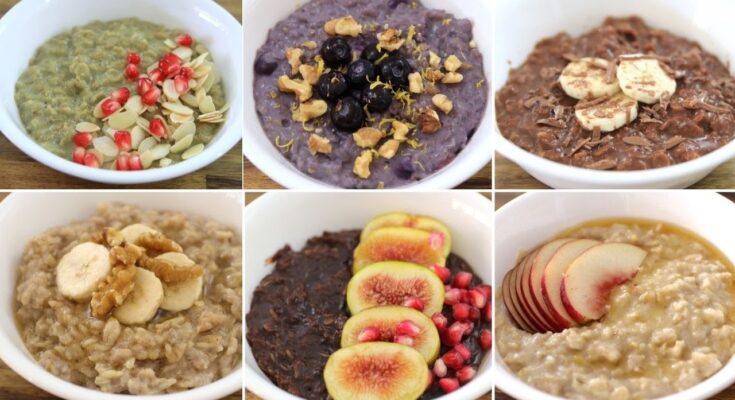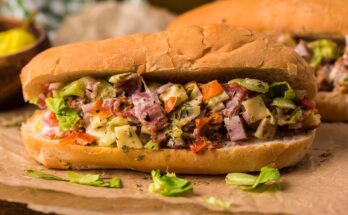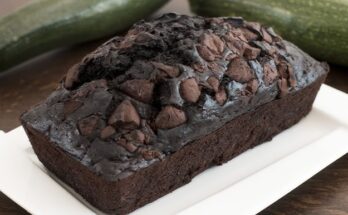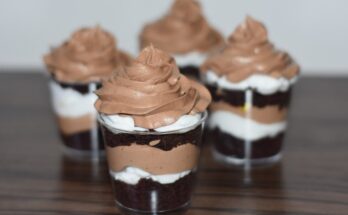Porridge Recipe: Porridge is one of those humble, heartwarming meals that have stood the test of time. Essentially, it’s a simple dish made by boiling grains—most commonly oats—in water or milk until they soften into a creamy, soothing consistency. But don’t let the simplicity fool you. Porridge can be as plain or as luxurious as you like, depending on how you prepare and top it. Across different cultures, porridge takes many forms—from Scotland’s traditional oatmeal to Asia’s rice-based congee. What makes porridge so universally loved? It’s the perfect blend of comfort, nutrition, and customization.
Why Porridge is the Perfect Breakfast Choice
If breakfast is the most important meal of the day, then porridge is its crowned champion. Here’s why: it’s warm, filling, and fuels your body with slow-digesting carbohydrates that keep you energized and satisfied for hours. Especially in cooler weather, there’s nothing better than wrapping your hands around a bowl of freshly made porridge to start your day. Plus, it’s incredibly versatile. Whether you want to keep it light and simple or load it with fruits, nuts, and a drizzle of honey, porridge adapts to your taste and dietary needs. It’s also ideal for people watching their weight or managing their cholesterol levels, thanks to its high fiber content and low glycemic index.
Ingredients Needed for the Perfect Bowl of Porridge
Basic Ingredients
Before you dive into the pot, let’s talk about the core ingredients you’ll need to get started. Here’s the basic list:
- 1 cup rolled oats (or steel-cut for a chewier texture)
- 2 cups of liquid (water, milk, or a combination of both)
- A pinch of salt
That’s all you need for a traditional, no-frills porridge base. Rolled oats are most common and cook faster than steel-cut oats, while instant oats can turn mushy and are best avoided for this guide. The choice of liquid plays a big role in flavor and creaminess—milk gives a richer taste, while water keeps it lighter and more neutral.
Optional Add-Ins for Extra Flavor
Once you’ve nailed the base, you can get creative with add-ins that make your porridge stand out. Some popular additions include:
- Sweeteners: Honey, maple syrup, brown sugar
- Fruits: Banana slices, apple chunks, berries (fresh or dried)
- Spices: Cinnamon, nutmeg, vanilla extract
- Nuts and Seeds: Chia seeds, flaxseeds, walnuts, almonds
- Superfoods: Protein powder, maca, spirulina
These ingredients aren’t just for taste—they also boost the nutritional value of your breakfast. For instance, adding chia seeds ups the fiber and omega-3 content, while a scoop of protein powder can make the dish more balanced, especially if you’re starting the day post-workout.
How to Cook Porridge – A Step-by-Step Guide
Step 1: Measure Your Ingredients
Consistency is key when it comes to porridge. Too thick, and it’s a paste. Too runny, and it’s soup. Start with the golden ratio: 1 part oats to 2 parts liquid. If you’re cooking for two, use 1 cup of oats and 2 cups of liquid. Want it creamier? Use more milk. Like it lighter? Use more water.
Step 2: Combine Ingredients in a Pot
Use a medium-sized saucepan and combine your oats, liquid, and a pinch of salt. Don’t skip the salt—it brings out the natural flavor of the oats and balances the sweetness if you’re adding fruits or sugar later. Stir gently to combine and make sure the oats don’t stick together or clump.
Step 3: Cook on Medium Heat and Stir
Turn the heat to medium and bring the mixture to a gentle boil. Once it starts bubbling, reduce the heat to low and stir frequently. This step is where the magic happens. The oats will absorb the liquid, swell, and break down into a creamy texture. Stirring prevents the porridge from sticking to the pot and ensures even cooking.
Let it simmer for about 5–7 minutes for rolled oats, or 15–20 minutes if you’re using steel-cut oats. Adjust the cooking time based on your texture preference.
Step 4: Adjust Consistency
Now’s the time to tweak the texture. If your porridge is too thick, add a splash of milk or water. If it’s too thin, let it simmer a bit longer. Stir continuously until you hit that sweet spot of creaminess that you love. This is where experience and preference play a role—some people like their porridge thick and hearty, others prefer it a bit more soupy.
Step 5: Serve and Enjoy
Remove the pot from heat and let your porridge sit for a minute or two—it will continue to thicken slightly. Pour it into a bowl and get creative with your toppings. Want something indulgent? Try peanut butter, sliced bananas, and dark chocolate chips. Looking for a clean, healthy bowl? Go with blueberries, a drizzle of honey, and chia seeds.
Tips for the Best Porridge Every Time
- Always use fresh oats for the best taste.
- Stir constantly to avoid clumping or sticking.
- For ultra-creamy porridge, soak the oats overnight before cooking.
- Add spices like cinnamon or cardamom during cooking to infuse flavor.
- Finish with a knob of butter or a splash of cream for richness.
Common Mistakes to Avoid When Making Porridge
Even though porridge seems like one of the simplest breakfasts you can make, there are a few common mistakes that can ruin the experience. Avoiding these will help you perfect your bowl every time.
1. Using the wrong type of oats: Not all oats are created equal. Instant oats cook fast but often turn mushy. Steel-cut oats take longer but give a chewy, nutty texture. Rolled oats strike a balance between the two. Picking the wrong type for your taste and cooking time can leave you disappointed.
2. Not stirring enough: One of the biggest issues people face is porridge sticking to the bottom of the pot or forming lumps. Stirring frequently while cooking prevents this and ensures even consistency.
3. Skipping the salt: This may sound minor, but salt is essential—even in sweet porridge. A pinch of salt enhances the natural flavor of the oats and makes sweet toppings pop. Without it, porridge can taste bland or flat.
4. Overcooking or undercooking: Overcooked porridge becomes gummy, while undercooked oats are gritty and unappetizing. Keep an eye on the texture and adjust your cooking time accordingly. Start with the recommended time but taste as you go.
5. Not experimenting with toppings: Sticking to just oats and milk every day can get boring. Get creative! Switch up your toppings to keep things exciting—think seasonal fruits, nuts, or even a swirl of nut butter or yogurt.
Healthy Topping Ideas for Porridge
Porridge is basically a blank canvas, and toppings are your paints. They can turn your basic bowl into a nutrient-rich powerhouse—or a dessert-like treat. Let’s look at some topping ideas you’ll want to try out.
Sweet Toppings
For those with a sweet tooth, you can transform your bowl into a naturally sweet delight without relying on processed sugars. Here are some delicious and nutritious options:
- Fresh fruits: Bananas, strawberries, blueberries, raspberries, or mango slices
- Dried fruits: Dates, raisins, cranberries, or apricots
- Natural sweeteners: Honey, maple syrup, agave nectar, or coconut sugar
- Spices: Ground cinnamon, nutmeg, cardamom, or pumpkin pie spice
- Other delights: A spoonful of nut butter, coconut flakes, or dark chocolate chips
Sweet toppings not only satisfy sugar cravings but also offer added fiber, vitamins, and antioxidants. Just be careful with portion sizes for dried fruits or sweeteners—they pack more sugar than fresh fruits.
Savory Toppings
Yes, savory porridge is a thing—and it’s amazing. For those days when you want something hearty or are craving a change from sweet, try these options:
- Fried or poached egg
- Sautéed spinach or kale
- Grilled mushrooms
- Avocado slices
- Grated cheese or crumbled feta
- Smoked salmon or turkey bacon
- Hot sauce, soy sauce, or miso paste for flavor
These toppings turn porridge into a savory meal that’s perfect any time of day—not just breakfast. It’s high-protein, high-fiber, and keeps you full for hours.
Different Types of Porridge Around the World
You might think porridge is just oats and milk, but around the world, it takes on many delicious forms. Let’s take a little tour.
Scottish Oatmeal
In Scotland, porridge is traditionally made with steel-cut oats (often called pinhead oats), cooked with just water and a pinch of salt. It’s thick, hearty, and usually served with milk or cream and a bit of brown sugar on top. Purists even stir with a wooden stick called a “spurtle.”
Rice Porridge (Congee)
A staple in many Asian countries like China, Thailand, and Korea, congee is made by boiling rice until it breaks down into a creamy soup. It’s often savory, topped with green onions, soy sauce, pickled vegetables, shredded chicken, or a soft-boiled egg. In Japan, a similar version called “okayu” is often served to those feeling under the weather.
African Millet Porridge
In many parts of Africa, millet is used to make a thick, nutritious porridge. It’s often fermented slightly for a tangy flavor and served either plain or with peanut butter, spices, and sweeteners. In East Africa, it’s known as “uji” and is commonly eaten for breakfast.
Each of these porridge styles reflects local ingredients and traditions, showing just how versatile and beloved this dish is worldwide.
Making Porridge with Different Grains
You don’t have to stick with oats. The beauty of porridge is that it works with almost any grain. Here’s how you can switch things up.
Oats
This is your go-to grain for quick, easy porridge. Rolled oats cook in under 10 minutes and have a soft, creamy texture. Steel-cut oats take longer but offer a chewier bite. Perfect for breakfast beginners or anyone in a rush.
Quinoa
A protein-rich option that’s great for those avoiding gluten. Cooked quinoa has a fluffy texture and slightly nutty taste. Combine it with almond milk, a bit of honey, and berries for a light yet filling breakfast. Bonus: it’s packed with essential amino acids.
Brown Rice
Hearty and satisfying, brown rice porridge takes longer to cook but is incredibly nutritious. Simmered in coconut milk and sweetened with maple syrup, it’s a comforting dish that works well as breakfast or even dessert.
Experimenting with different grains not only keeps things interesting but also introduces new textures and nutritional benefits. Try a mix of grains for something totally unique!
Vegan and Dairy-Free Porridge Options
Going vegan or avoiding dairy doesn’t mean you have to sacrifice flavor or creaminess in your porridge. In fact, many plant-based versions can be just as rich, satisfying, and nutritious. Let’s explore how you can make a killer bowl of vegan porridge.
1. Choose your base liquid wisely: Instead of milk, use any of these delicious dairy-free alternatives:
- Almond milk: Light and slightly nutty, great for everyday porridge.
- Coconut milk: Ultra-creamy and rich, perfect for tropical-style toppings like mango and pineapple.
- Oat milk: Creamy and neutral, it pairs beautifully with any flavor combo.
- Soy milk: High in protein and ideal for a thicker texture.
- Cashew milk or rice milk: Mild in flavor and super smooth.
2. Skip the butter—add healthy fats: For creaminess without dairy, stir in:
- A spoonful of nut butter (peanut, almond, cashew)
- A splash of coconut cream
- Some mashed banana or pumpkin puree for natural sweetness and texture
3. Top it up with plant-powered toppings:
- Fresh berries, sliced bananas, or chopped apples
- Seeds like chia, flax, sunflower, or hemp
- Dried fruits like raisins or dates
- Plant-based yogurt for extra creaminess
Not only is vegan porridge kind to animals and the planet, but it’s also loaded with fiber, antioxidants, and healthy fats. Plus, it’s totally customizable depending on what’s in your pantry.
Porridge for Weight Loss – Is It Effective?
Absolutely, porridge can be a fantastic tool for weight loss—but only if you do it right. It’s not just about eating oats; it’s about how you prepare them, what you add to them, and how they fit into your overall diet.
Why porridge helps with weight loss:
- High in fiber: Oats contain beta-glucan, a type of soluble fiber that slows digestion, reduces appetite, and keeps you feeling full longer.
- Low in calories: A bowl of plain porridge is relatively low in calories compared to most other breakfasts.
- Supports blood sugar control: It has a low glycemic index, which helps keep blood sugar stable and prevents cravings later.
Smart ways to use porridge for weight management:
- Stick to unsweetened milk alternatives or water.
- Avoid dumping in sugar—go for natural sweeteners like cinnamon or fruit.
- Add protein to keep you full: a scoop of plant protein powder, nuts, or seeds.
- Watch your portion sizes, especially with calorie-dense toppings like nut butter or dried fruits.
Pro tip: If you’re intermittent fasting or on a calorie-controlled plan, porridge makes a great first meal to break your fast—gentle on the stomach, but packed with nutrients.
Storing and Reheating Porridge
Let’s face it—mornings can be hectic. The good news? Porridge is meal-prep friendly. You can make a big batch, store it, and reheat it without losing flavor or texture.
How to store porridge:
- Let the porridge cool completely before storing.
- Transfer to airtight containers or glass jars.
- Refrigerate for up to 4-5 days.
- For longer storage, freeze in portion-sized containers for up to 3 months.
Reheating tips:
- Place the porridge in a saucepan or microwave-safe bowl.
- Add a splash of milk or water to loosen the texture.
- Heat gently, stirring often if on the stove, or in 30-second bursts in the microwave.
- Top it up with fresh fruits or nuts after reheating.
Meal-prepping porridge is a time-saver that makes it easy to stick to healthy habits during busy weeks. Just grab, reheat, and go!
FAQs About Porridge Recipe
1. What is the best type of oat to use for porridge?
The ideal oat for that perfect creamy porridge is the rolled oat. These oats have been steamed and flattened, allowing them to cook quicker while retaining a satisfying texture. Steel-cut oats are another excellent choice for those who prefer a chewier, nuttier flavor.
2. How much water or milk should I use for porridge?
The classic oat to liquid ratio is 1:2. This means for every cup of oats, you use two cups of liquid (water, milk, or a combination of both). Feel free to adjust the liquid amount depending on whether you like your porridge thick or runny.
3. What are some healthy toppings for porridge?
Sky’s the limit when it comes to porridge toppings! Some nutritious options include sliced bananas, berries, nuts, seeds, and a drizzle of honey or maple syrup. For an extra health kick, sprinkle some chia seeds or ground flaxseed on top.
4. Can porridge be made vegan?
Absolutely! Swap out dairy milk for any plant-based milk like almond, soy, oat, or coconut milk. Top with your favorite vegan toppings, and you’ve got yourself a hearty, vegan-friendly bowl.
5. How can I add more protein to my porridge?
To boost the protein content, stir in a scoop of your preferred protein powder, or add a dollop of Greek yogurt. You can also cook your oats in milk instead of water to up the protein stakes.
6. Is porridge suitable for a gluten-free diet?
Yes, but make sure you opt for oats that are certified gluten-free as oats can often be contaminated with gluten during processing.
7. Can I make porridge in advance?
Indeed, porridge is a great option for meal prep. Cook a larger batch and store it in the fridge for up to 5 days. Reheat it with a little extra milk or water, and it’s ready to serve!
8. What is the best way to sweeten porridge?
Natural sweeteners like honey, maple syrup, or agave nectar are great choices. For a sugar-free option, try sweetening your porridge with mashed banana or a sprinkle of cinnamon.
Final Thoughts
Porridge may be one of the simplest dishes out there, but its potential is absolutely endless. Whether you’re looking for a comforting winter breakfast, a hearty pre-workout meal, or a customizable dish that fits your dietary needs—porridge delivers. With just a few ingredients and a little creativity, you can transform basic oats into a nourishing, delicious experience every single day.
Experiment with different grains, liquids, toppings, and textures until you find your signature style. And remember, making the perfect porridge isn’t about being fancy—it’s about finding what works for you. Once you do, you’ll never look at breakfast the same way again.



